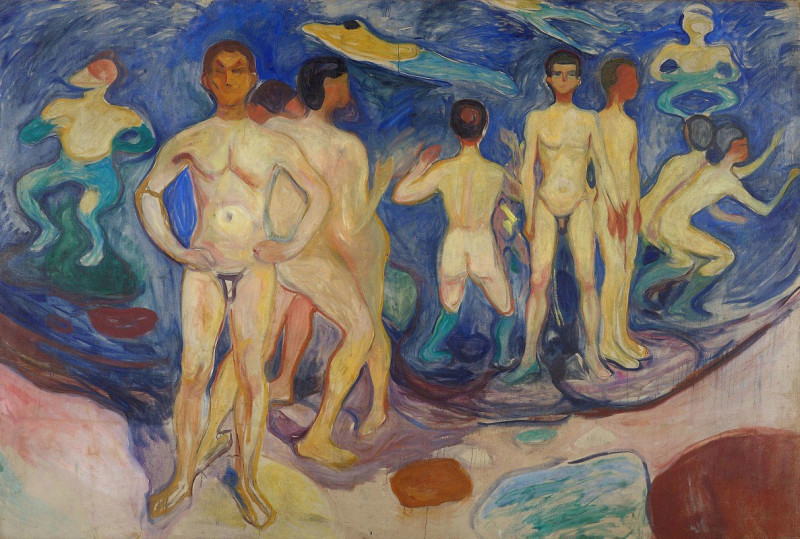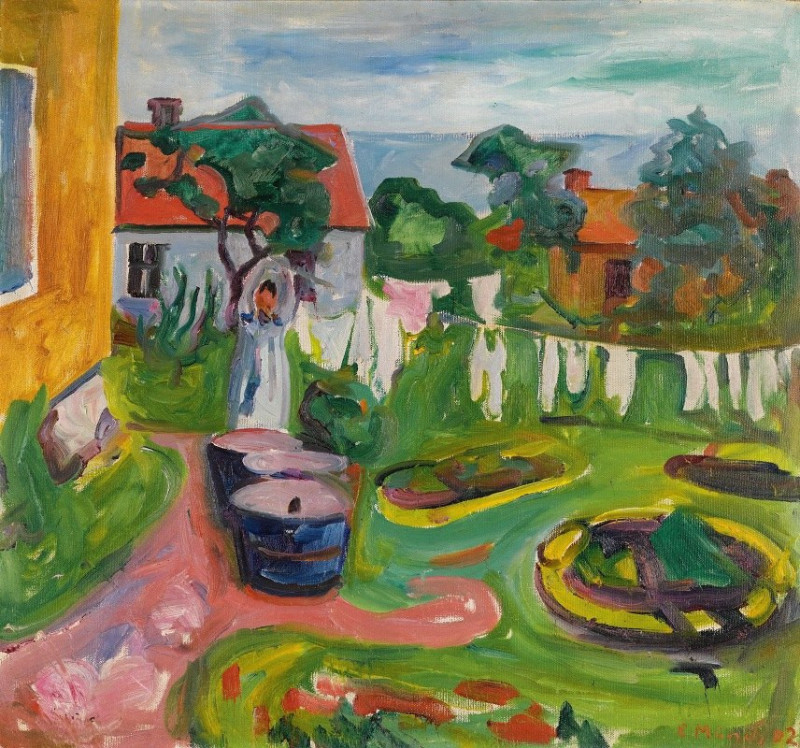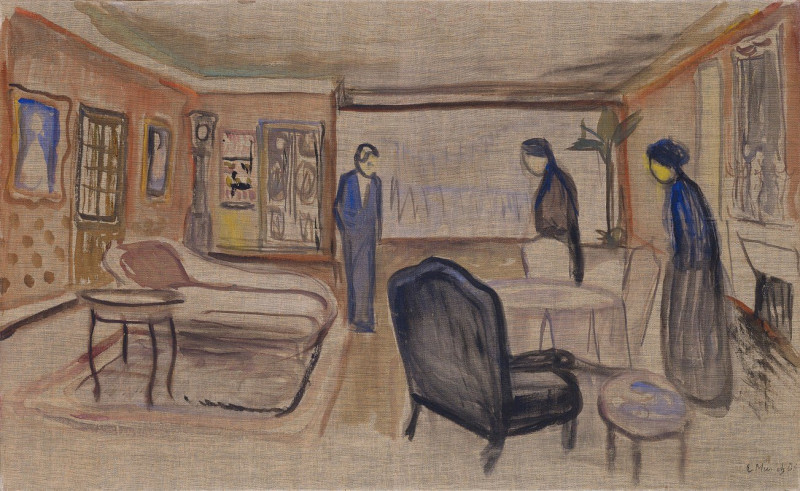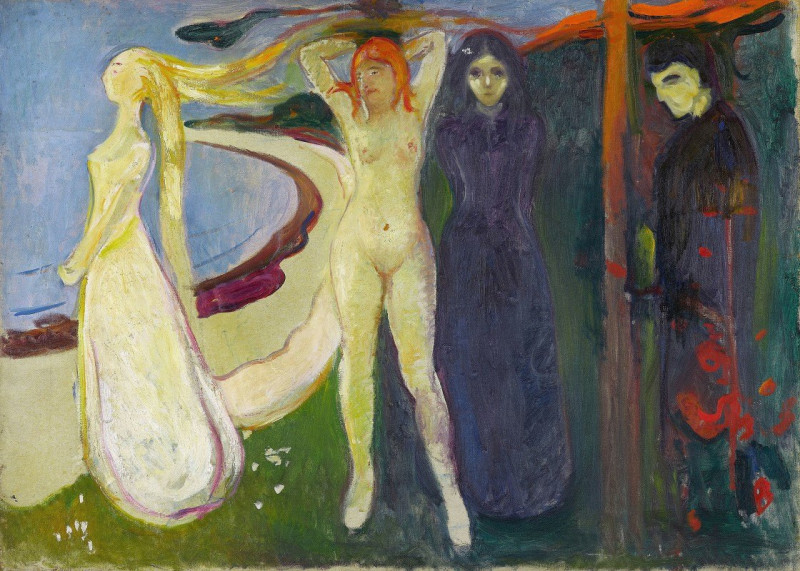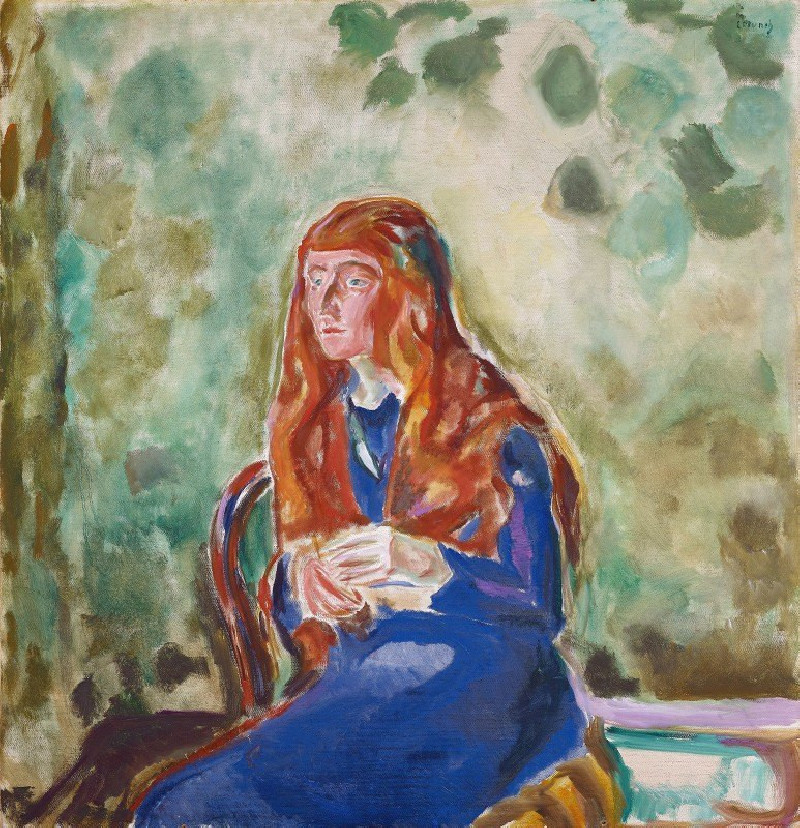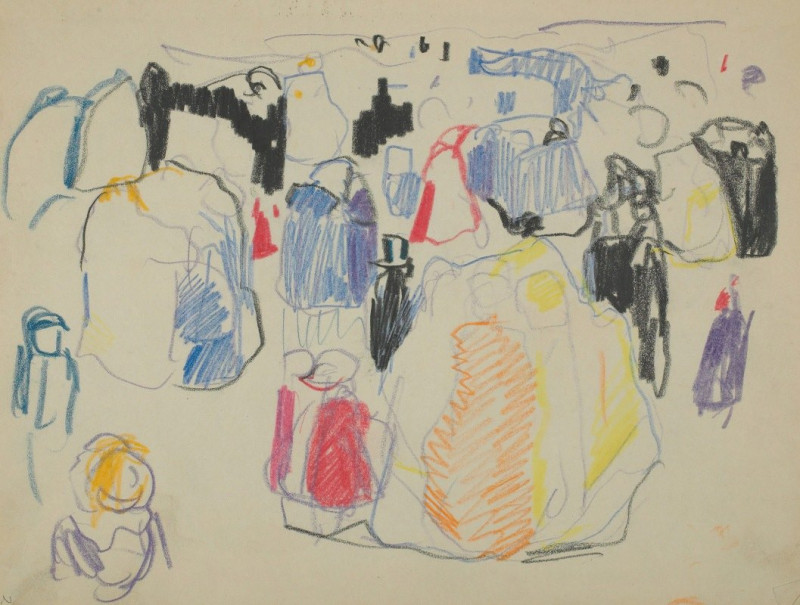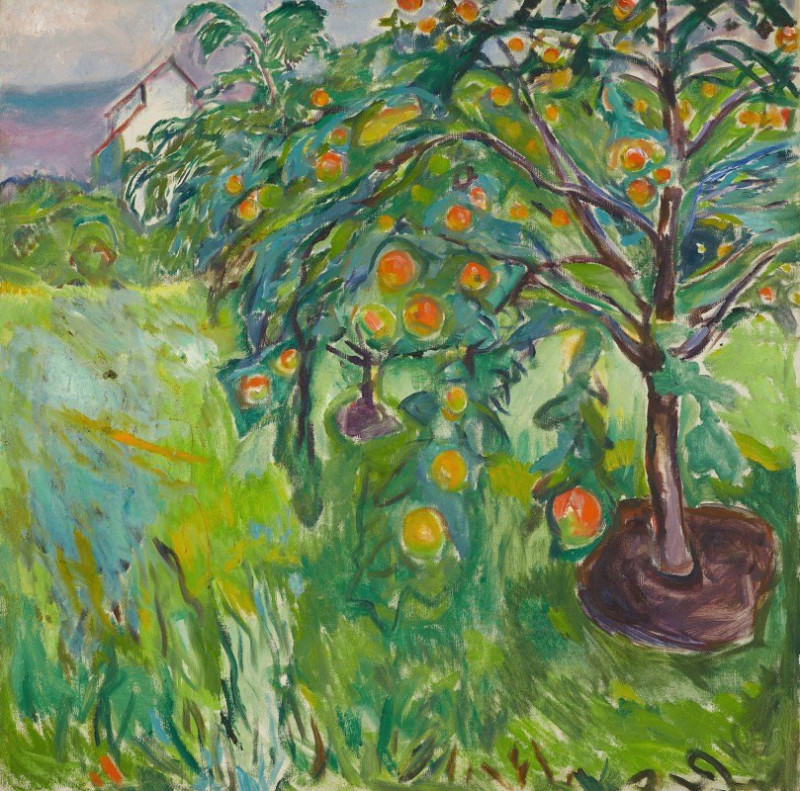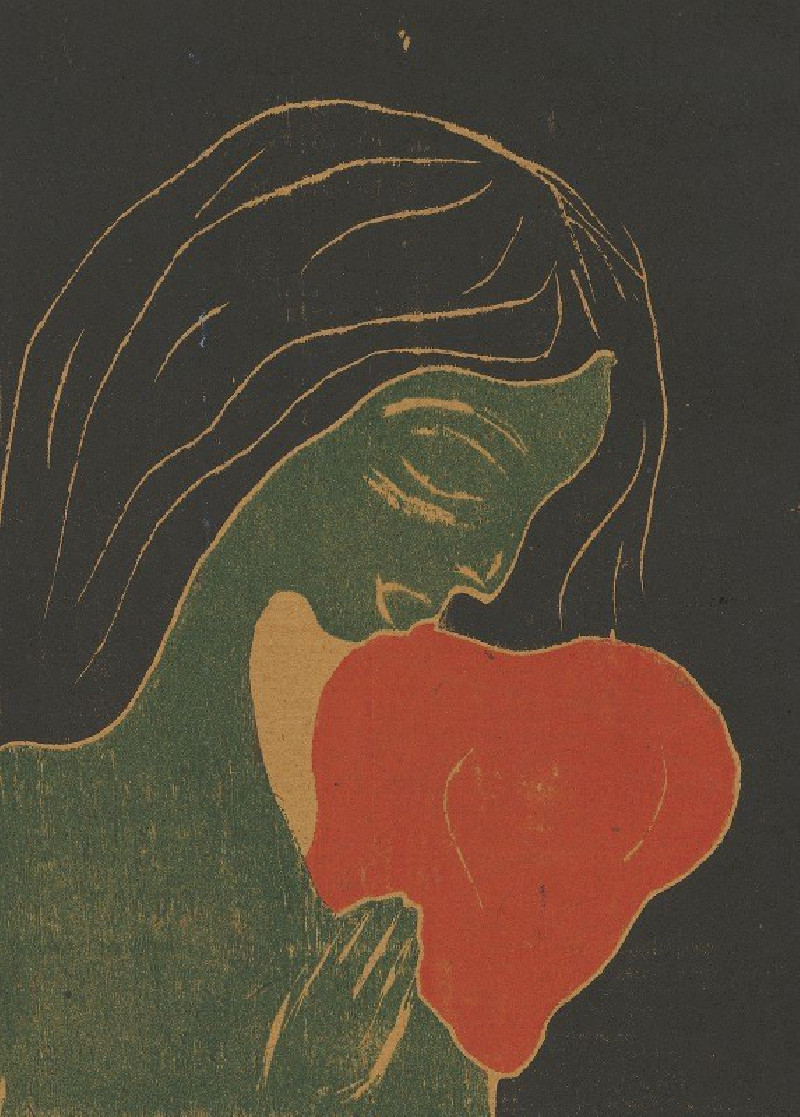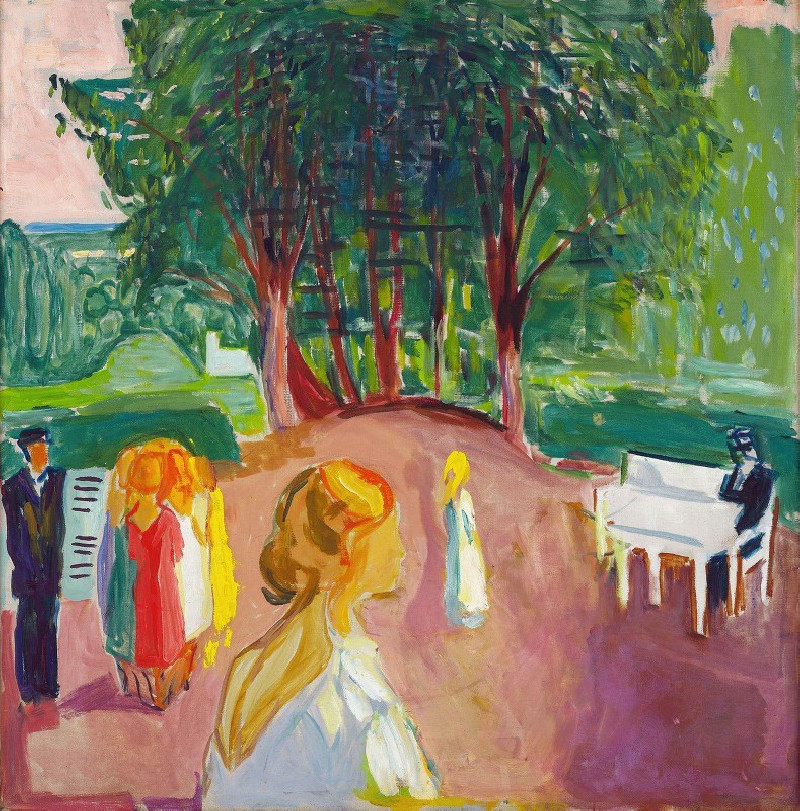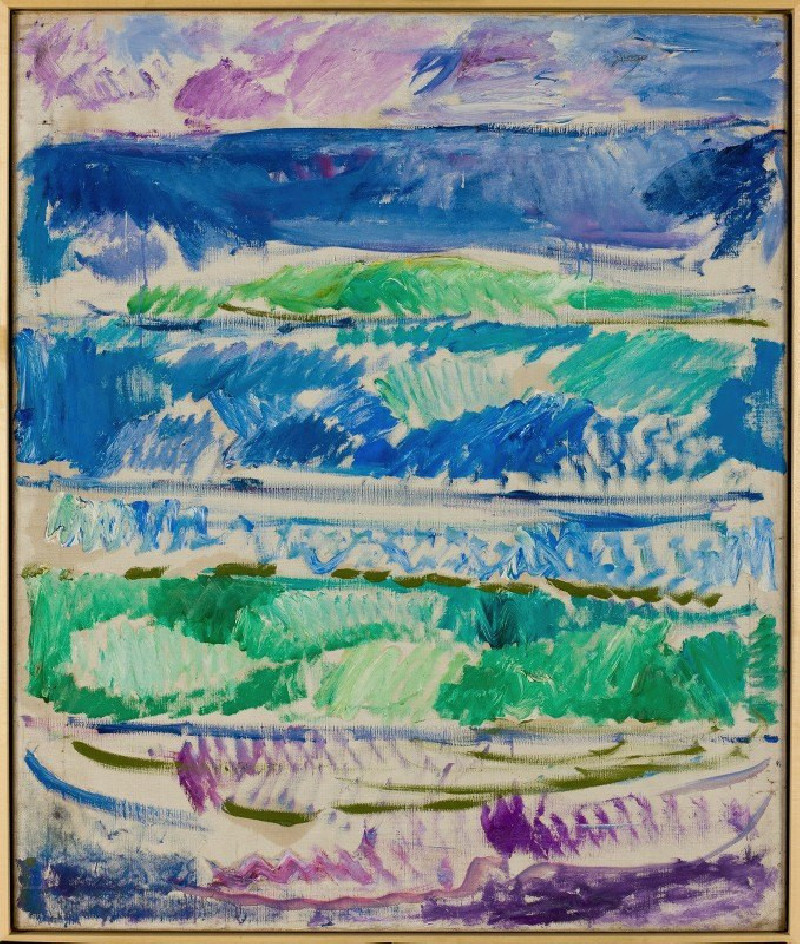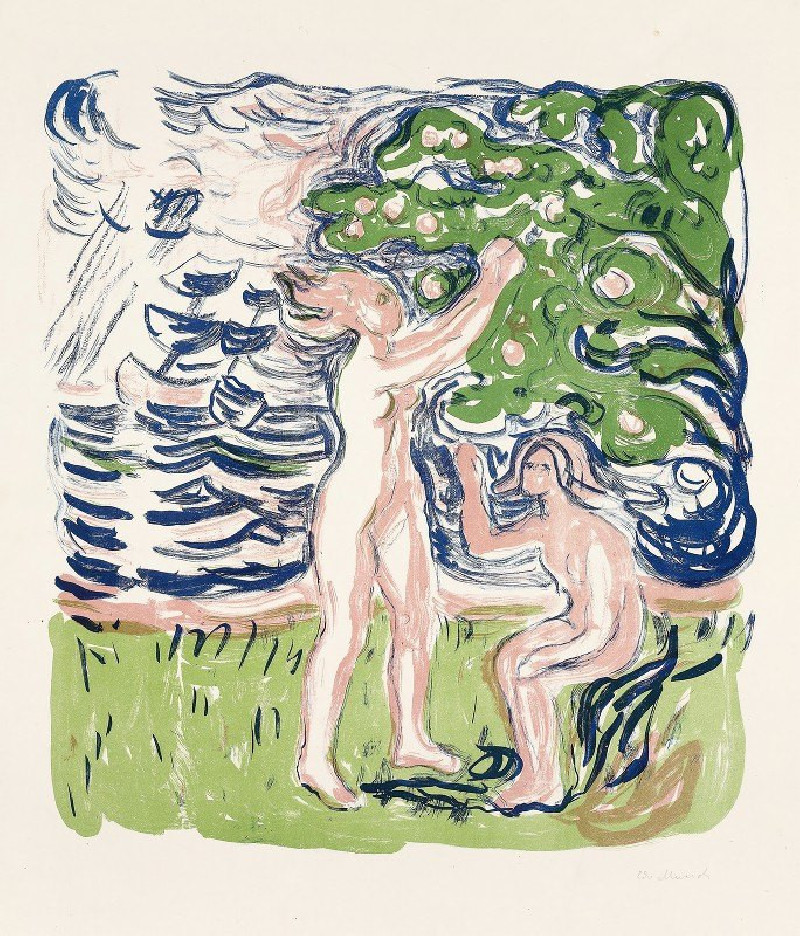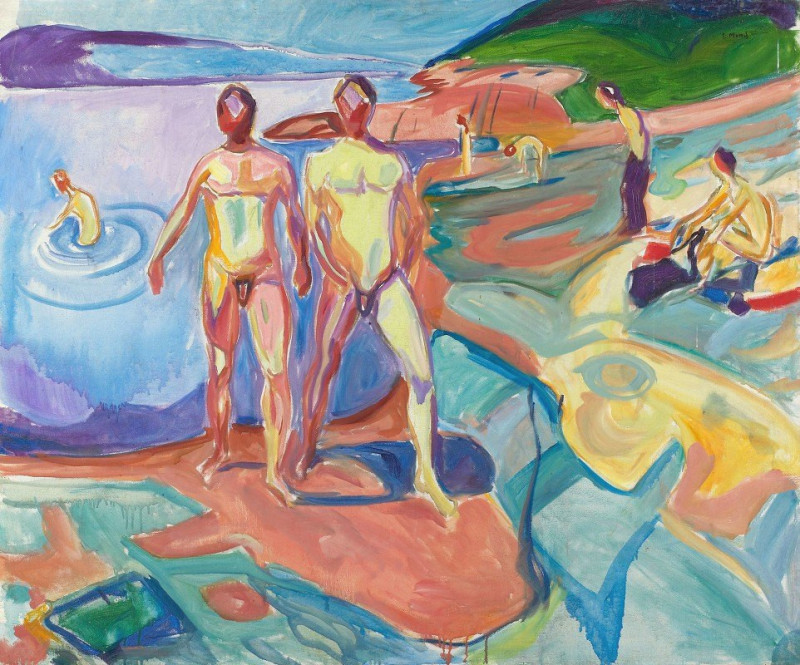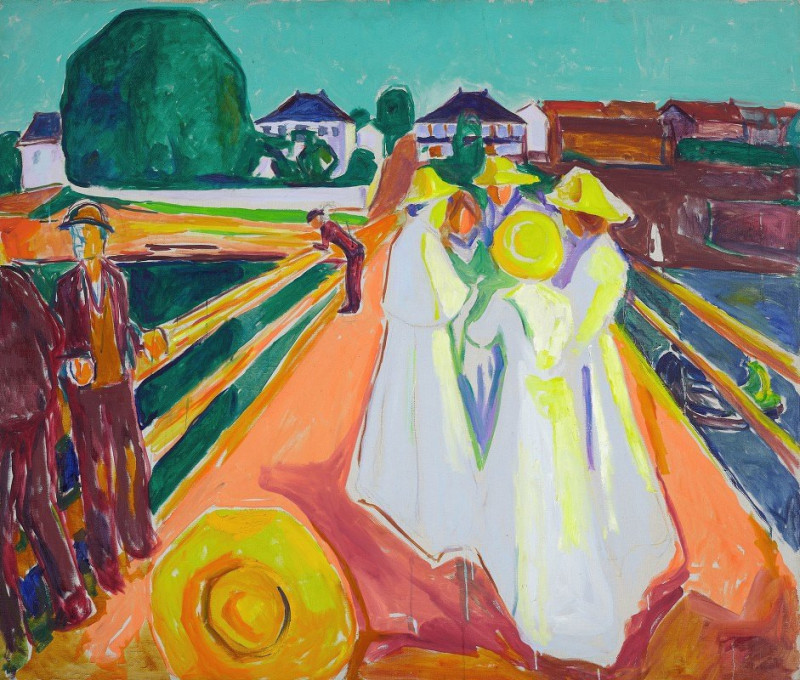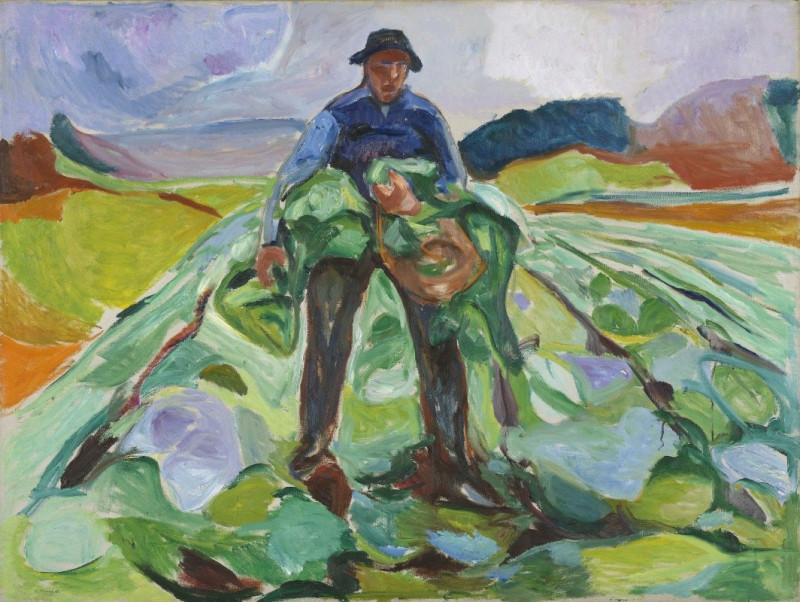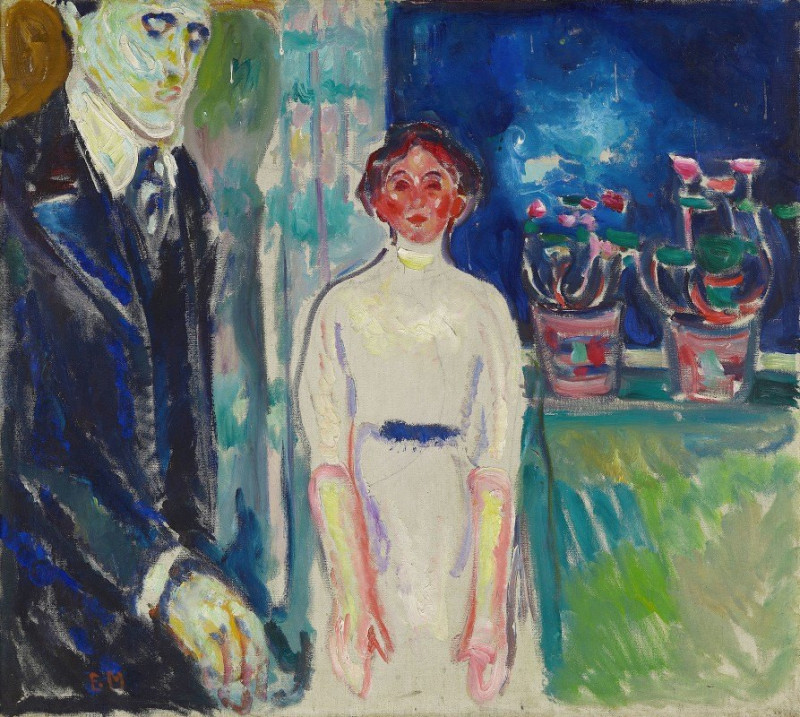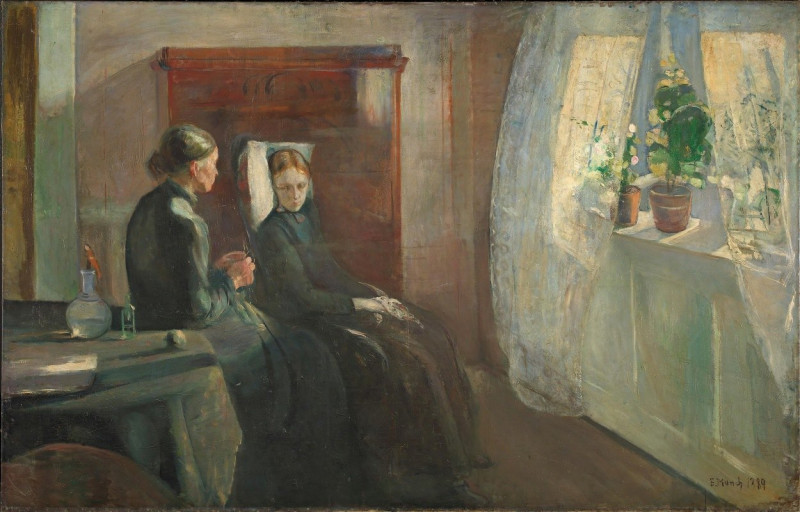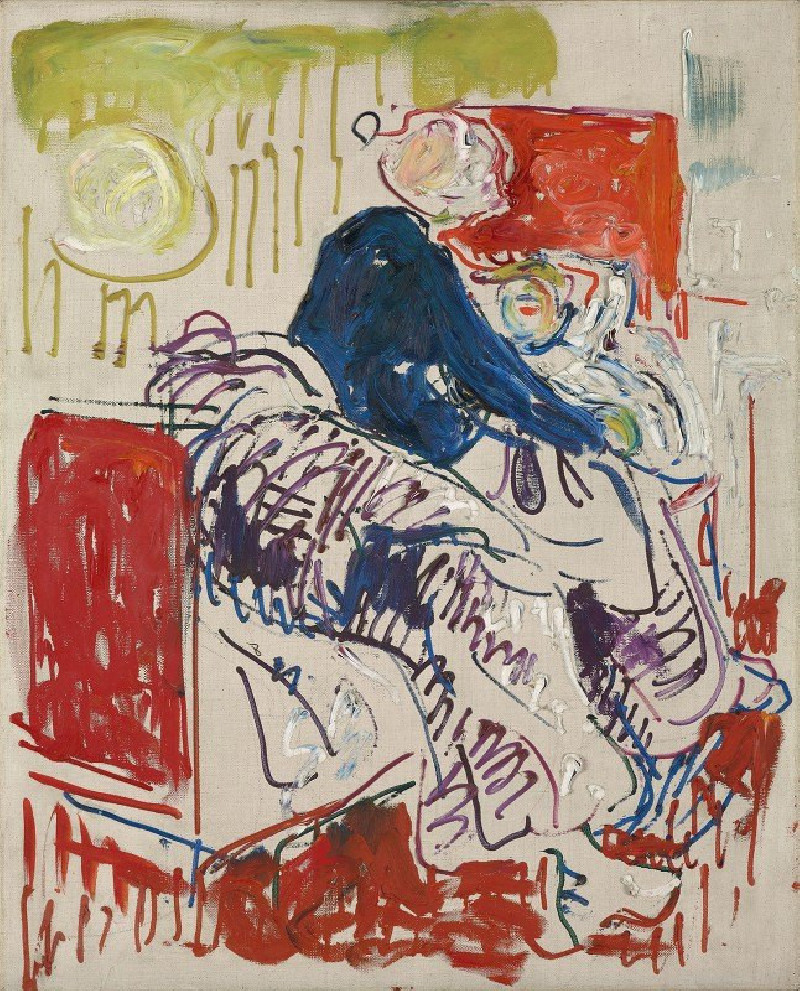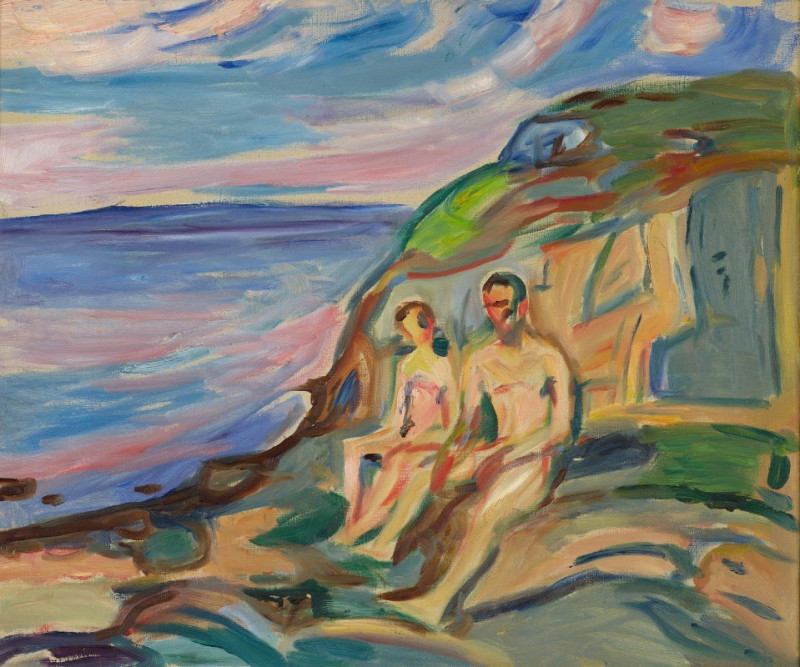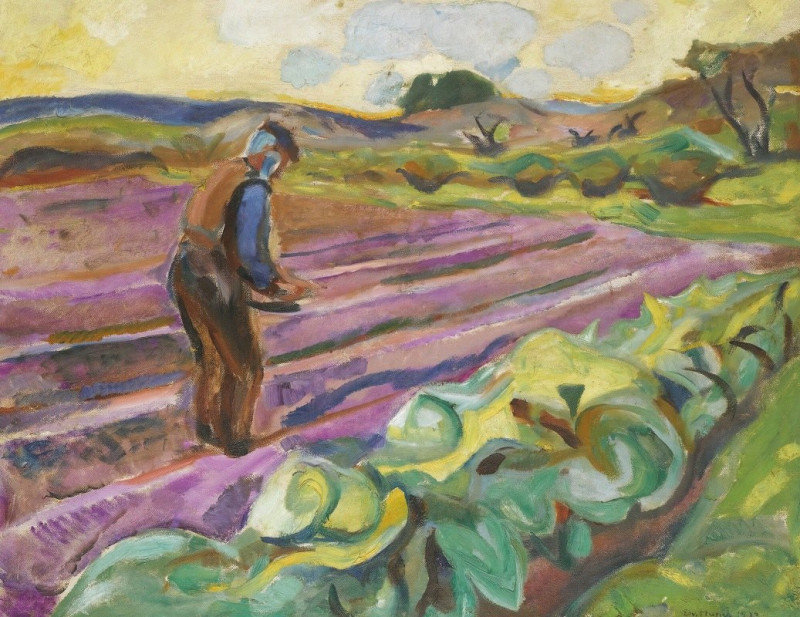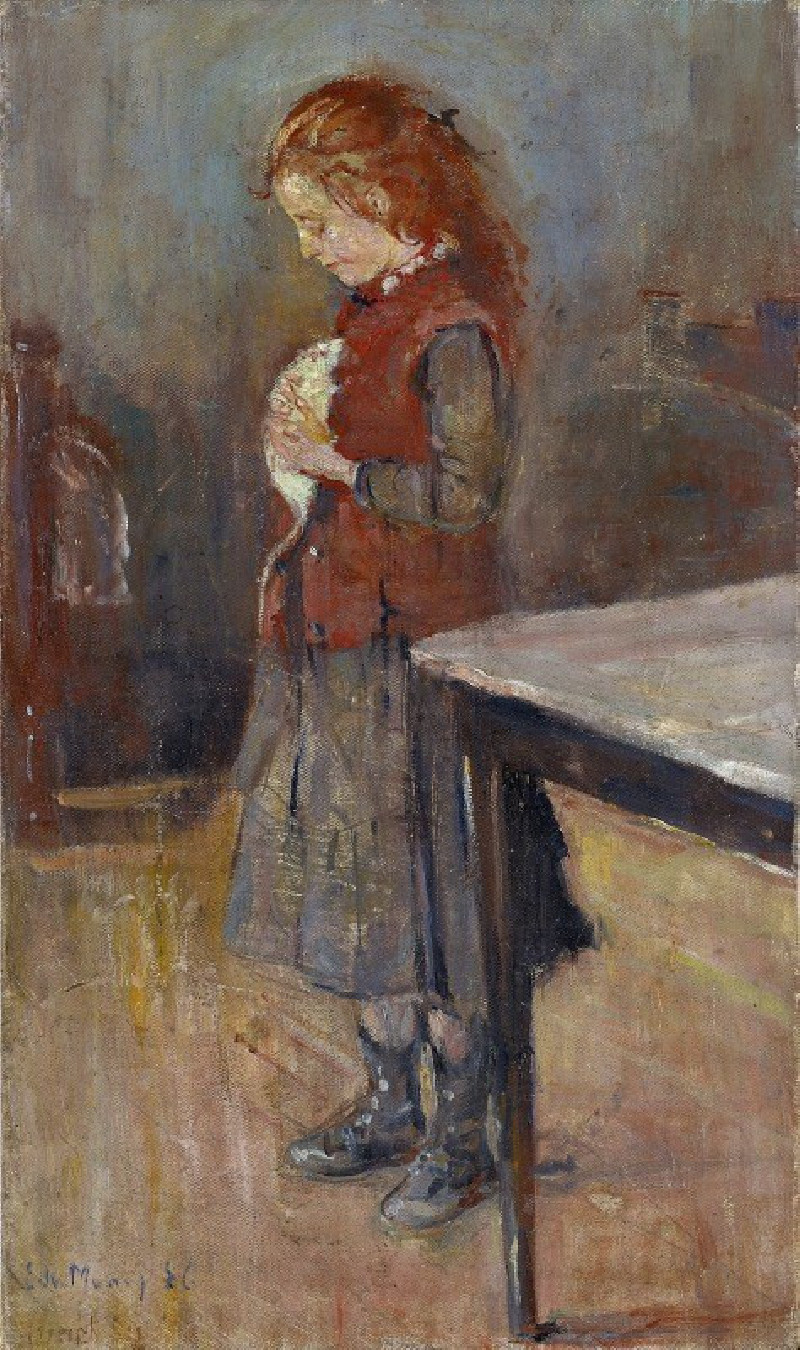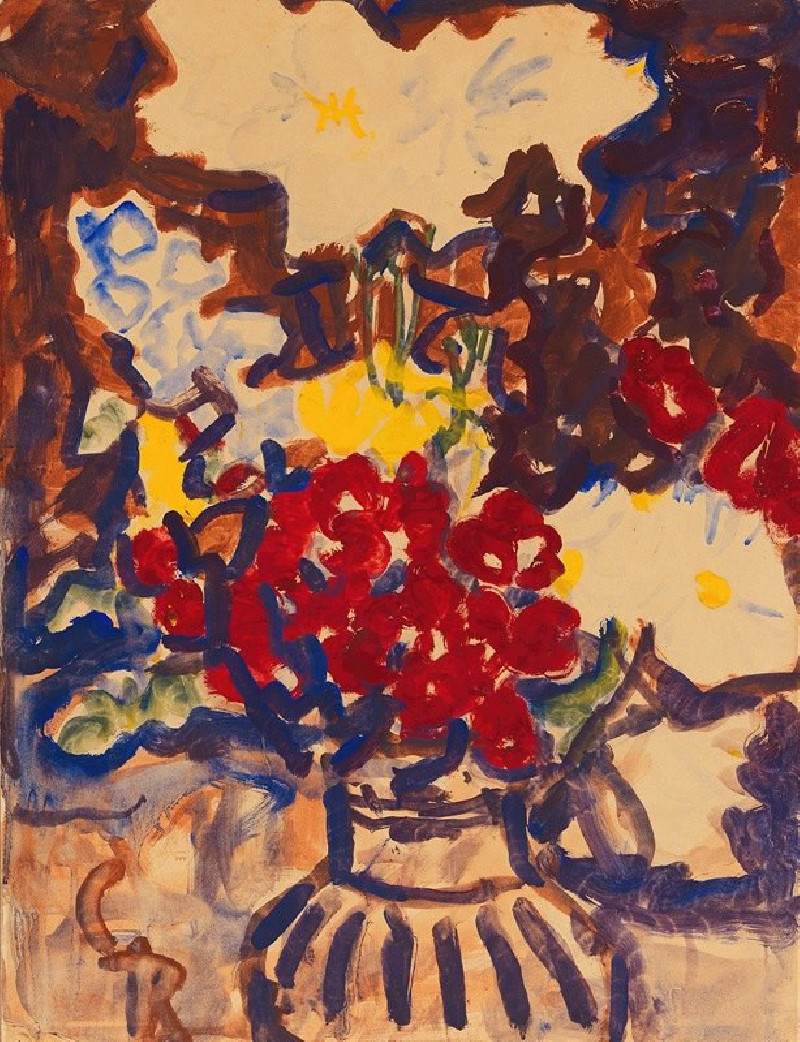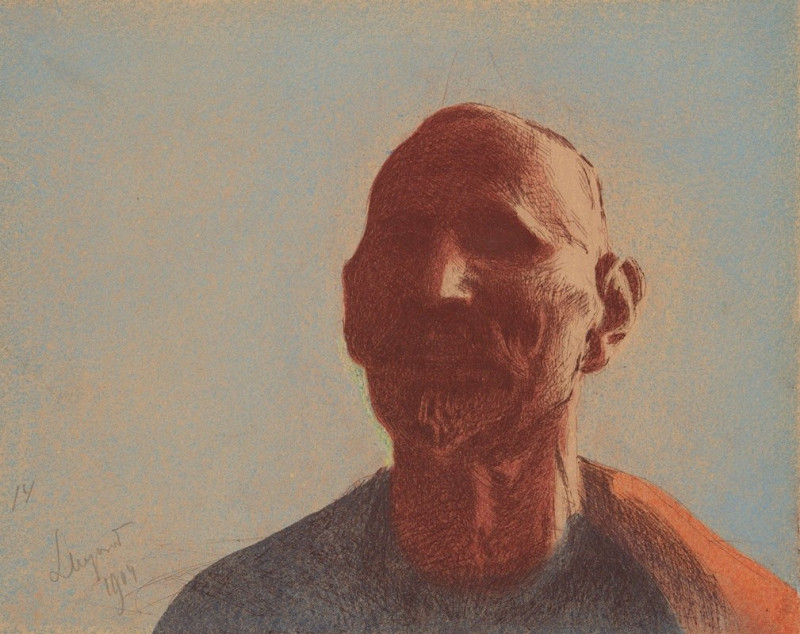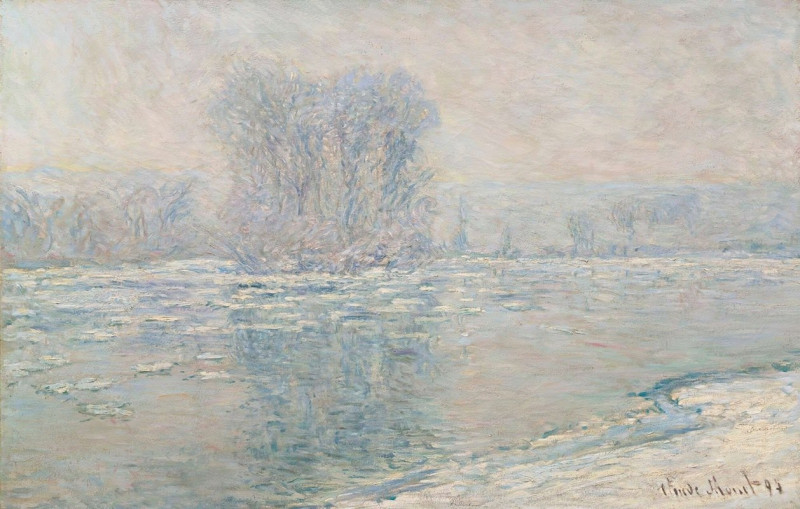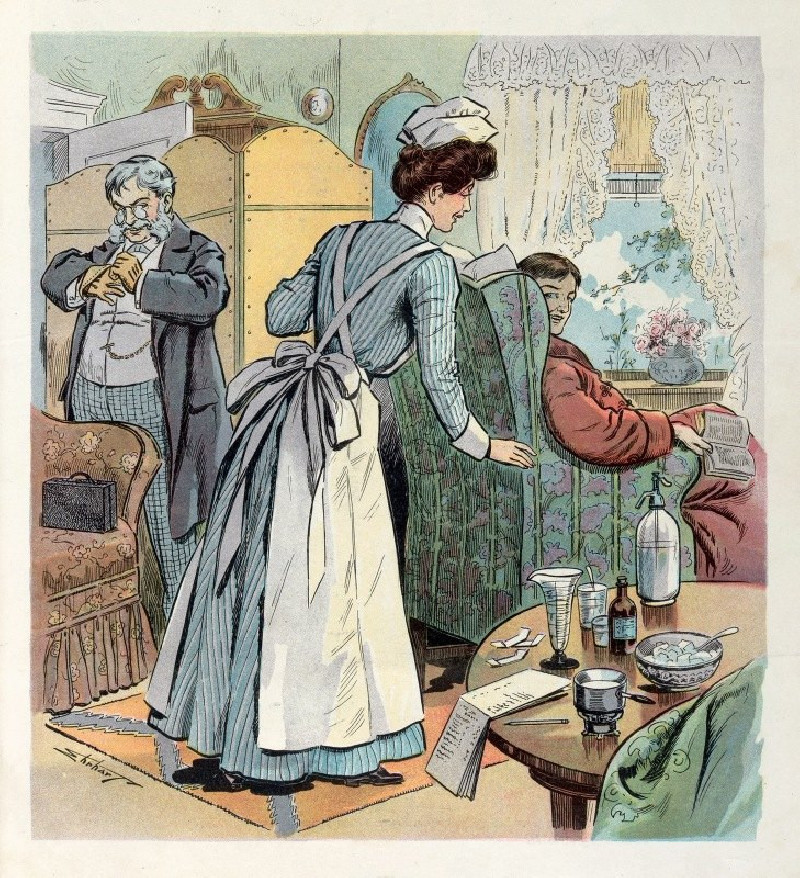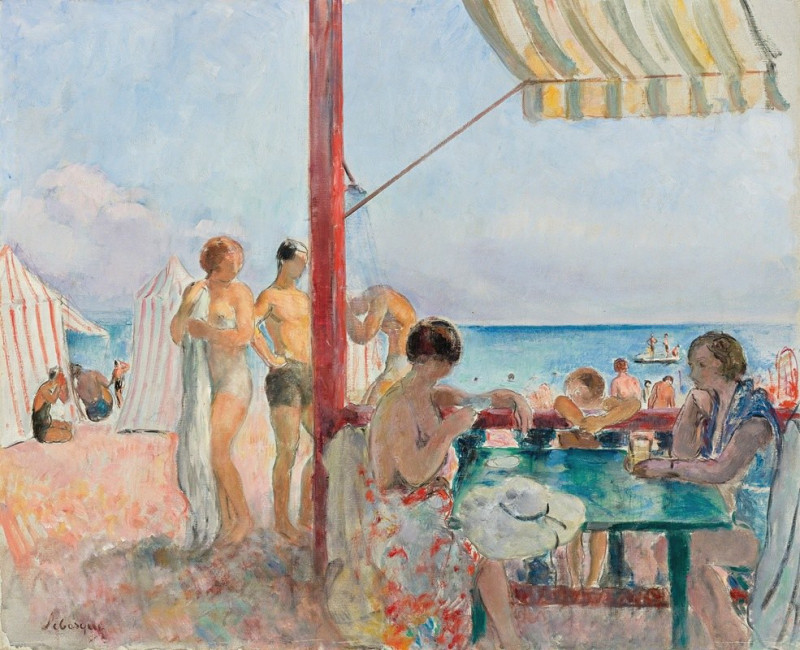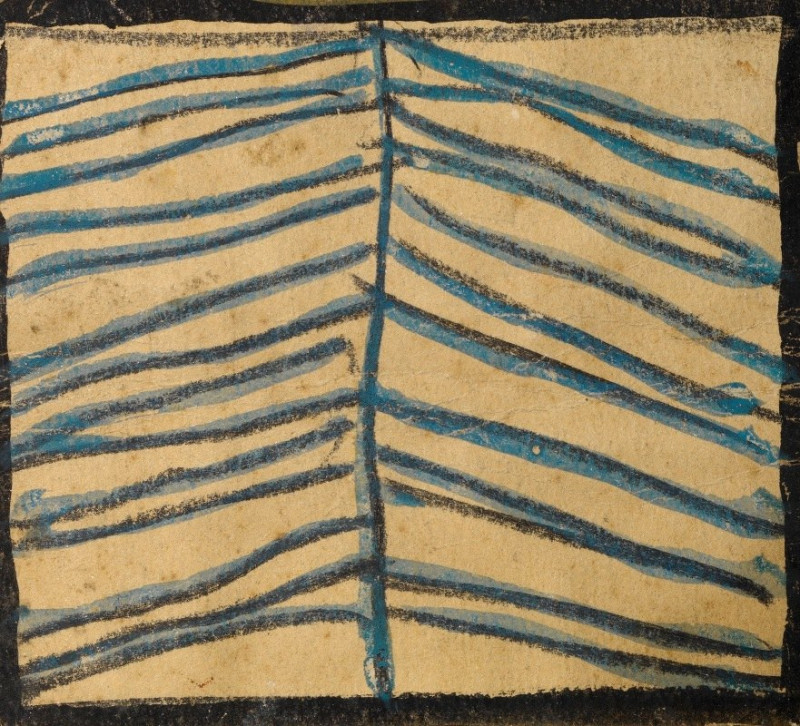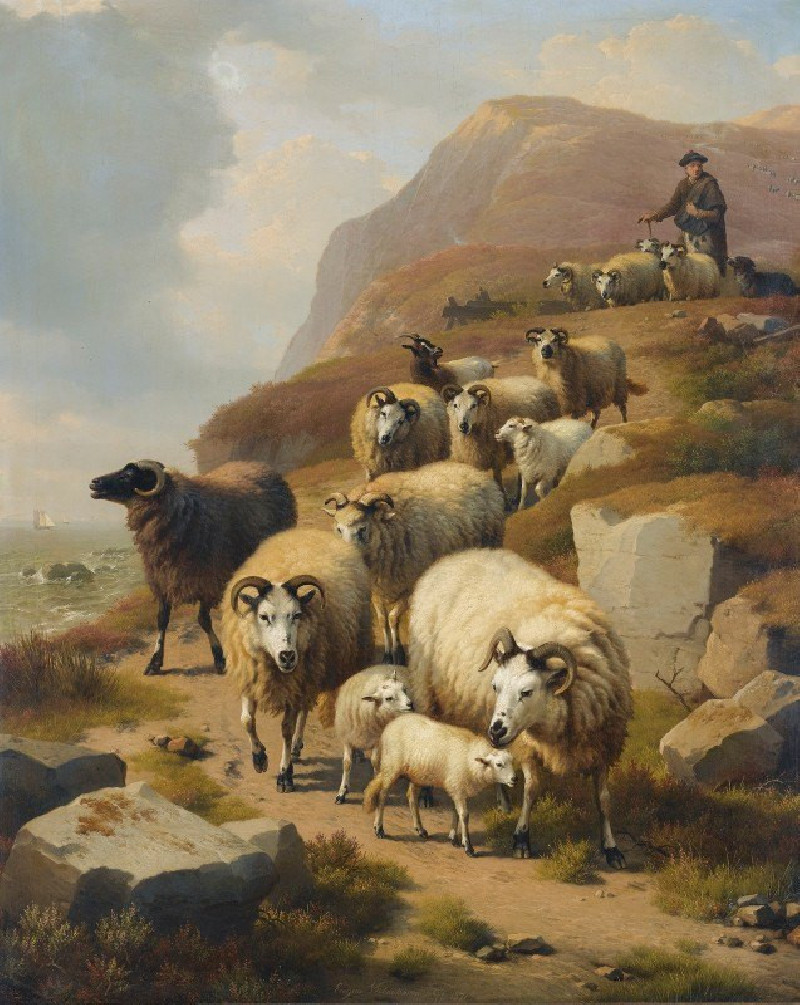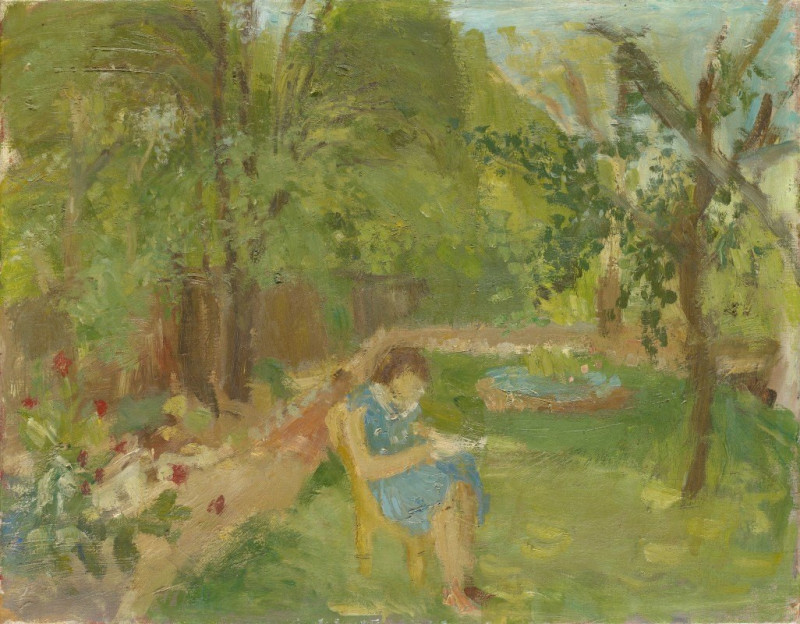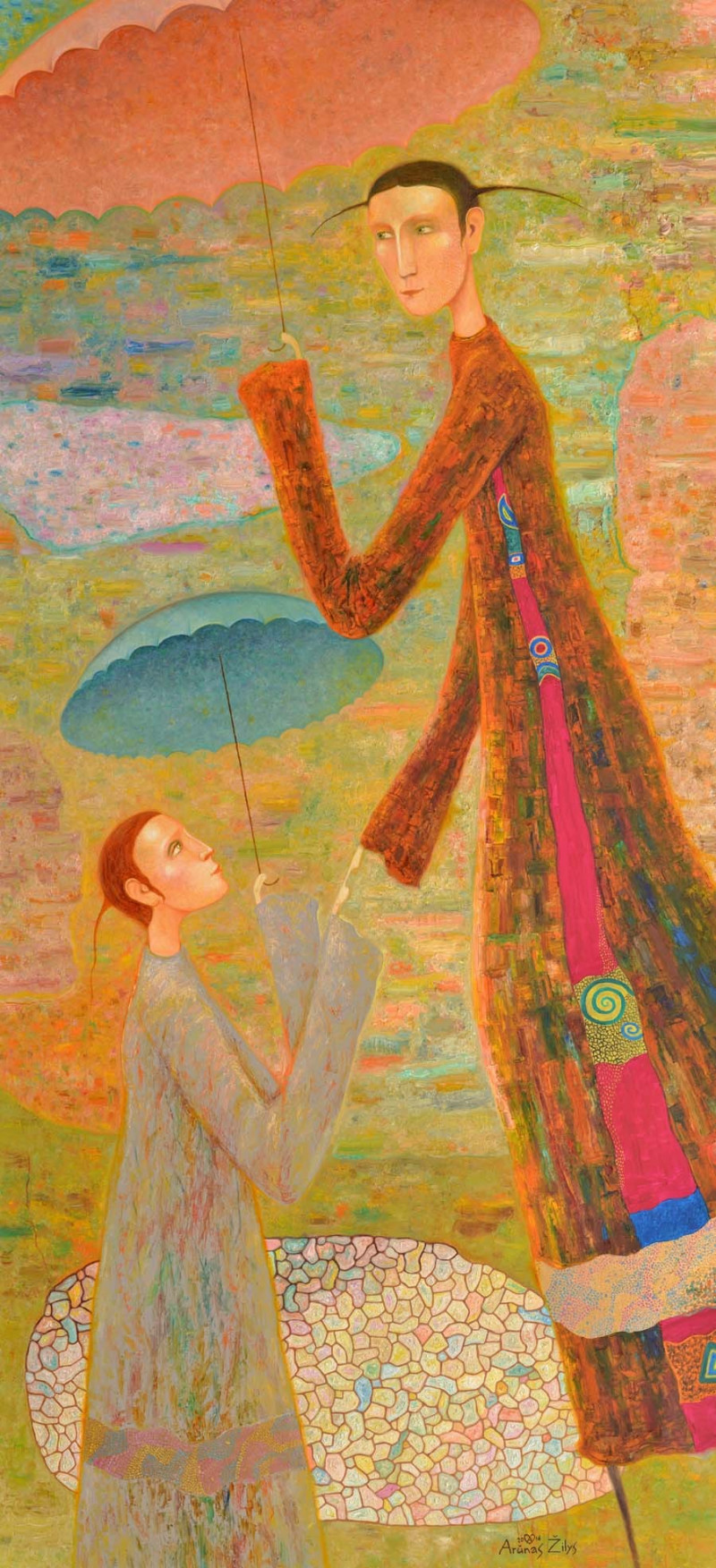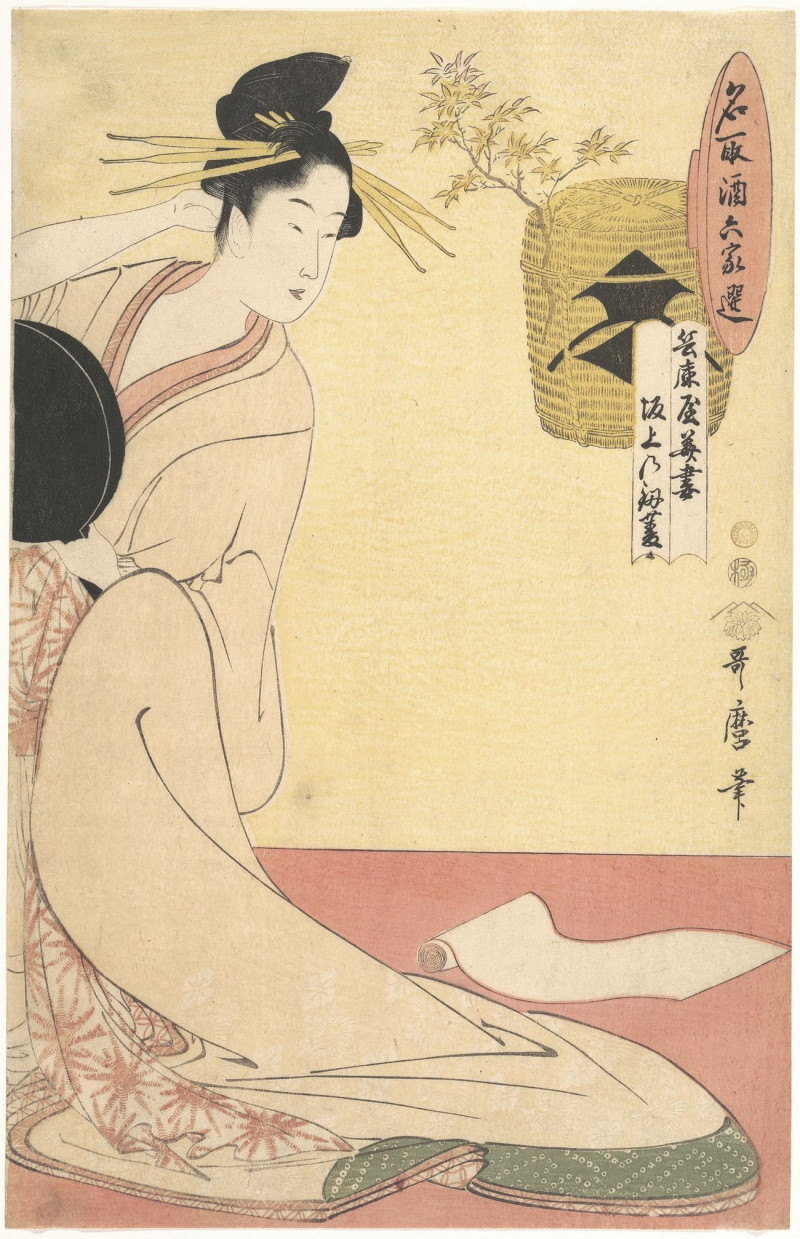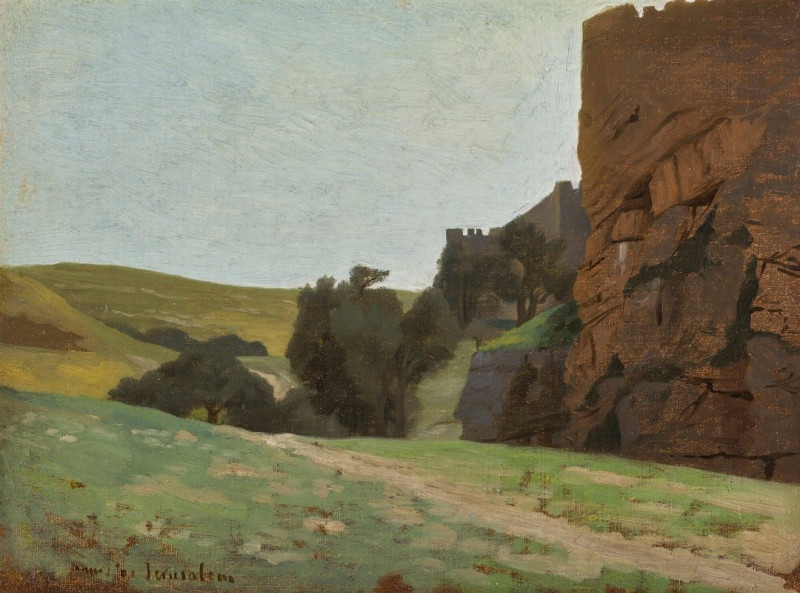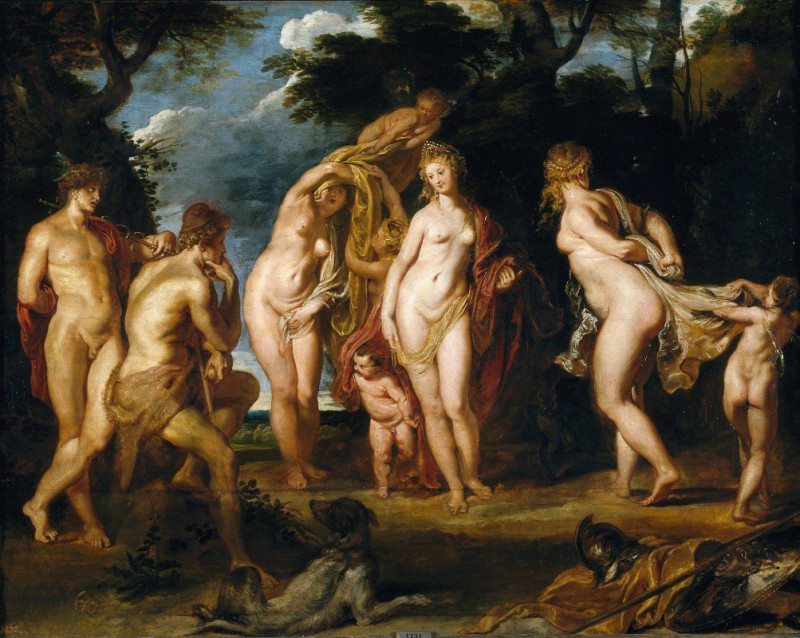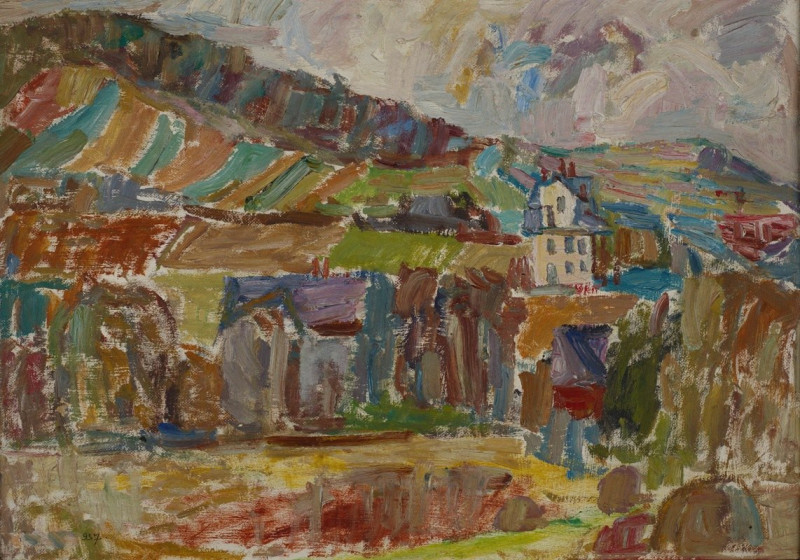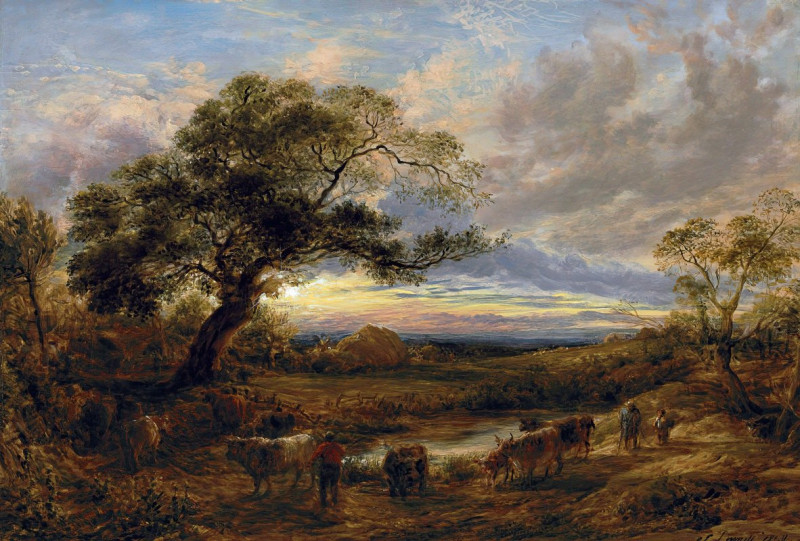Bathing Young Men (1904)
Technique: Giclée quality print
Recommended by our customers
More about this artwork
"Bathing Young Men" by Edvard Munch, painted in 1904, is a vivid and dynamic work that portrays a group of nude figures by the water. This expressive painting showcases Munch’s hallmark style of using bold, swirling colors and fluid lines that evoke emotion and movement.In the painting, various young men are seen in different poses; some seem to be entering the water, while others stand or move in more relaxed stances. There is a central figure directly looking at the viewer, which draws immediate attention due to his frontal pose and more defined features compared to the other characters. His expression appears contemplative, almost anchoring the piece amidst the surrounding activity.The backdrop and the space around the figures swirl with blues and greens, suggesting the presence of water in motion. The colors are rich yet slightly muted, evoking a dreamlike atmosphere that is typical of many of Munch’s works.What is particularly striking about this painting are the abstract forms and blurred lines that give a sense of motion and fluidity, reflecting perhaps the playful or invigorating experience of bathing. The use of such abstraction is also suggestive of the emotional depth Munch often explored in his art—the transient, often intense feelings of being alive.Each character is stylized with elongated and somewhat distorted body forms, which may symbolize the fluid, ever-changing nature of youth and life.
Delivery
Returns
Edvard Munch (12 December 1863 – 23 January 1944) was a Norwegian painter. His best known work, The Scream (1893), has become one of Western art's most iconic images.
His childhood was overshadowed by illness, bereavement and the dread of inheriting a mental condition that ran in the family. Studying at the Royal School of Art and Design in Kristiania (today's Oslo), Munch began to live a bohemian life under the influence of the nihilist Hans Jæger, who urged him to paint his own emotional and psychological state ('soul painting'); from this emerged his distinctive style.

